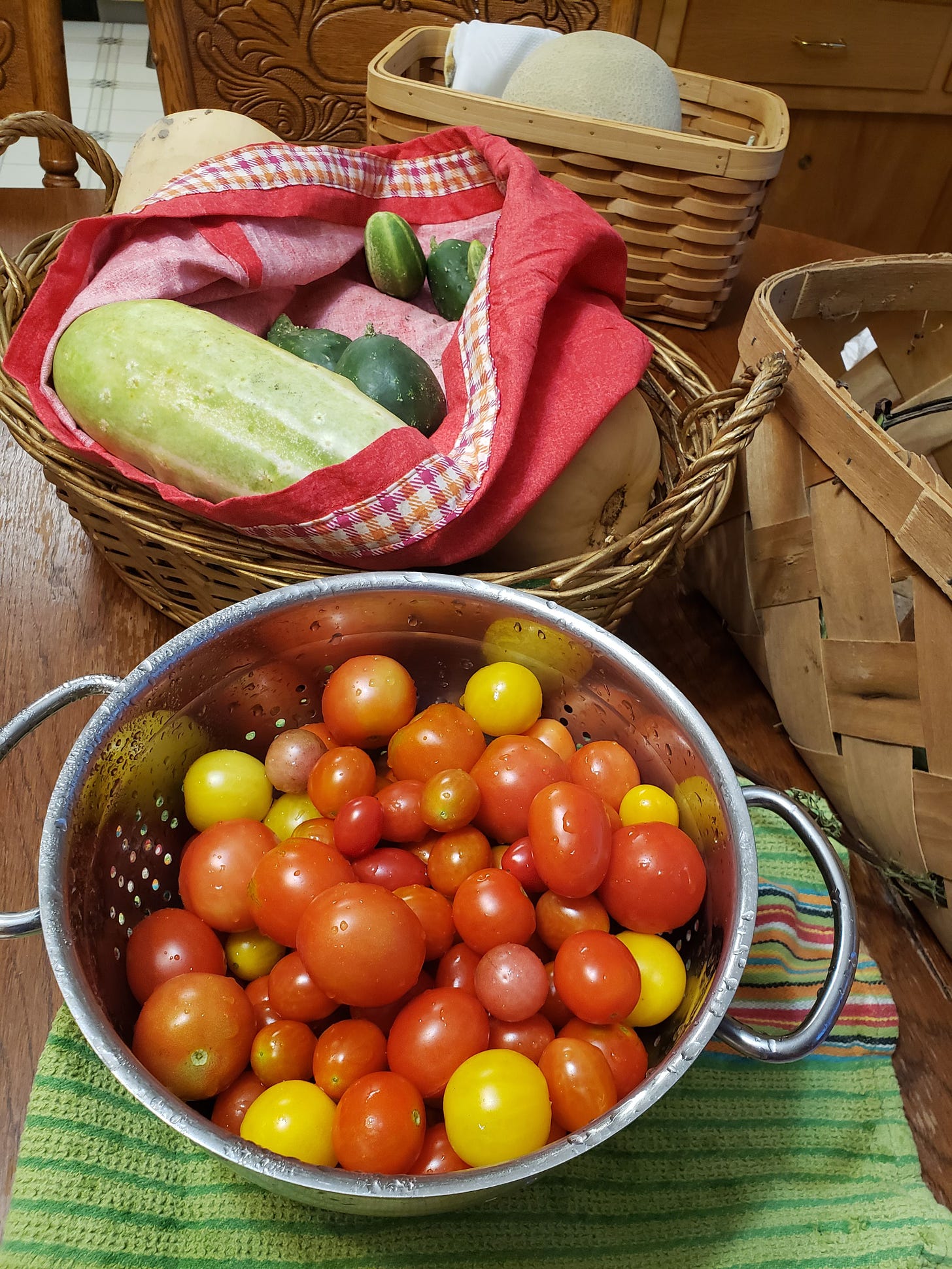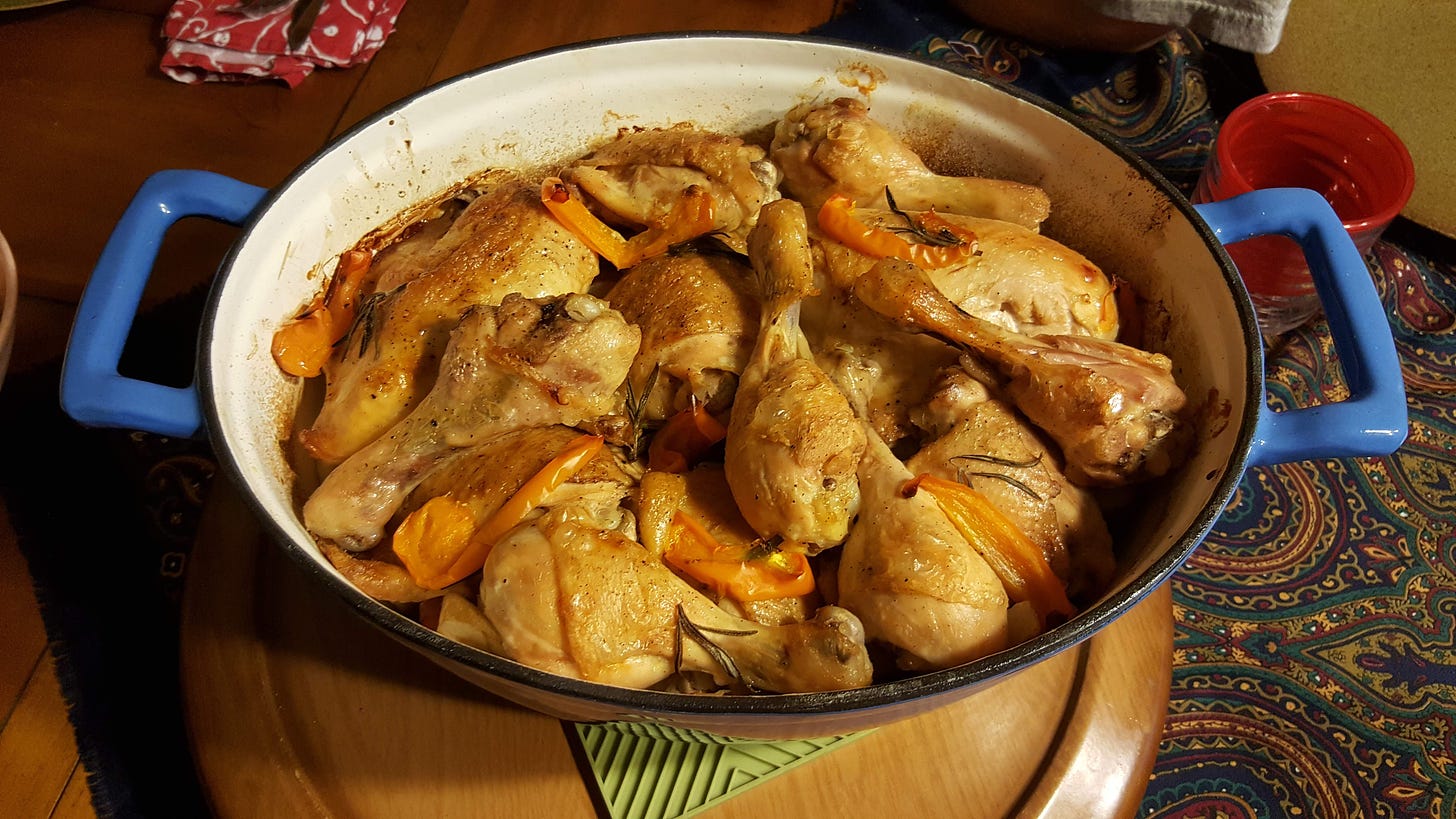Since the number of subscribers here has more than tripled(!) in the year since this post went out, this will be fresh to many of you and hopefully a welcome re-read to the rest. We won’t be sitting down to a Michaelmas dinner in this Year of Our Lord 2023, simply because we won’t have time during this weekend’s packed schedule. While we try to honor certain feast days in the liturgical year, we also live in the modern world, with a modern family’s busy calendar. My philosophy on liturgical and seasonal living is that any practices and traditions should add beauty and meaning, not provide additional stress through pressure to Do All the Things All the Time. Nobody needs more stress these days.
Happy Michaelmas!
September 29, the Feast of St. Michael the Archangel. Known alternately as the Feast of the Archangels or simply Goose Day, Michaelmas falls just past the Autumnal Equinox, when dark and light are evenly matched. The dates were likely one and the same under the old Julian calendar (which I wrote about here).
It is one of the Quarter Days, the others being June 24th (Midsomer, or St. John the Baptist’s feast day), December 25th (Christmas), and March 25th (Lady Day, or the Feast of the Annunciation, which I guess also kind of makes it the Archangel Gabriel’s special day). Devotees of Jane Austen will recall that Mr. Bingley, in Pride and Prejudice, takes possession of Netherfield at Michaelmas; really big Austen nerds (*cough*) may remember that in Persuasion, Admiral Croft starts his lease of Kellynch Hall at Michaelmas as well. It was also the date for payment of debts, start of school terms, beginning and end of employment contracts, and enactment of new legislation.
We started celebrating Michaelmas in our home several years ago, in an effort to acknowledge some of the minor feast days within the liturgical year. Michaelmas marked the end of the growing season in the northern hemisphere, often celebrated by feasting on the food just harvested. In our climate, too, the day lines up with the time our harvest is nearing its end.
The rhythms of the seasons guided our ancestors, whether through the solar events and their midpoints on the Wheel of the Year or the agricultural phases that were marked with religious feast days. When tending a garden, we pay a different degree of attention to the weather patterns of each week, to the cycles of the Earth that call for the annual repeating pattern of chores, and to the intervals of plenty and scarcity that are hidden from our view by the convenience of supermarkets.
Michaelmas Traditions
A traditional Michaelmas feast in the British Isles included goose, bannock (pan-fried flat quick-bread), vegetables, and blackberries. There was a legend that when St. Michael kicked the devil out of heaven, the devil fell onto a blackberry bush and cursed the fruit (by either scorching it, spitting on it, or urinating/ pooping on it, depending on the story version one reads), so that it would be no good to eat after a brief period of ripeness. In the Celtic and Germanic cultures of pre-Christian times, it was a puca (a mythological shape-shifting animal trickster) that made the blackberries inedible by autumn.
Clear weather on Michaelmas was said to indicate a rough winter ahead, whereas if Michaelmas weather was poor, then winter would be mild. (I have to say, I like this weather proverb better than the groundhog thing in February.)
The Michaelmas Daisy, among dead weeds,
Blooms for St Michael's valorous deeds.
And seems the last of flowers that stood,
Till the feast of St. Simon and St. Jude.— Old folk-rhyme
(SS. Simon & Jude’s day is October 28)
Back to 2023: This year’s Harvest Moon falls on Michaelmas. There’s a lovely post on it here:
Do comment below on any Michaelmas or other late September holidays that you celebrate. Have a great weekend!
— Erin, in Michigan











Happy Michaelmas, Erin! Beautiful post, and you know I was excitedly nodding along the whole time.
Happy Michaelmas! I'd love to start a tradition like this with my kids. This is great!